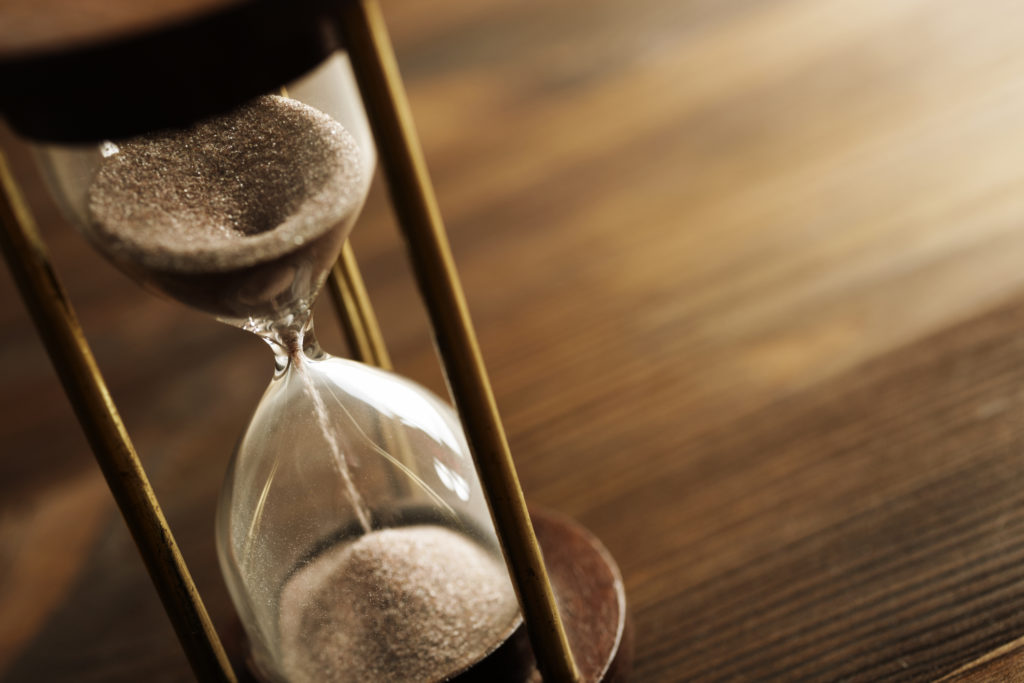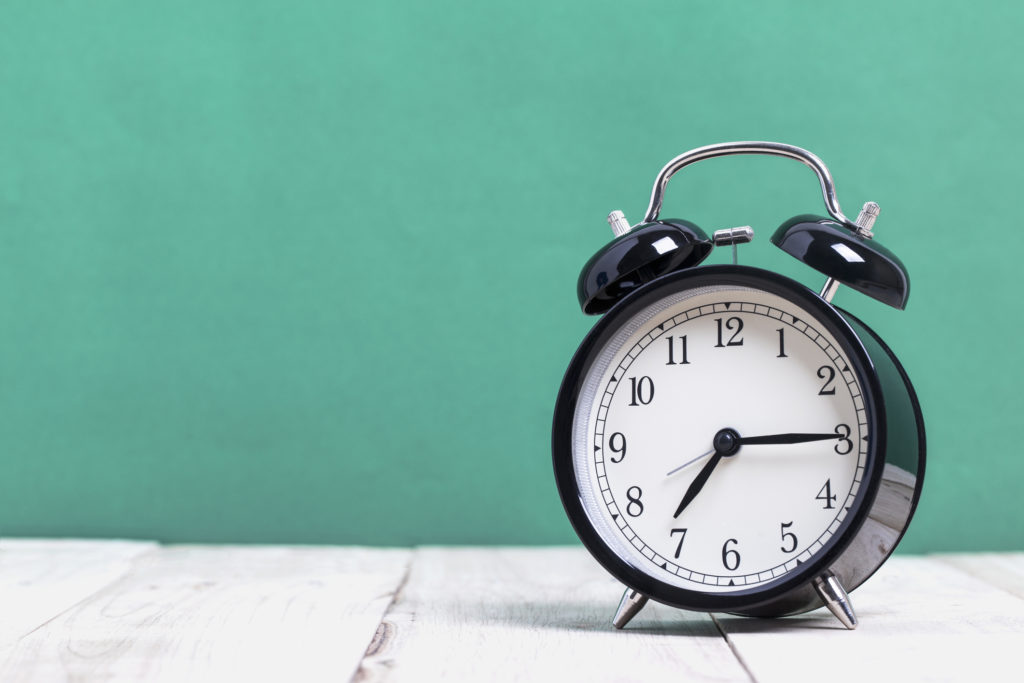Speaking Environment Part 2: Presentation Timing Tips
 This post is part of a four-part series that provides tips and techniques on how to best approach your speaking environment – from the room setup to technical considerations, as well as other elements – so that your presentation is heard and experienced exactly as you intended.
This post is part of a four-part series that provides tips and techniques on how to best approach your speaking environment – from the room setup to technical considerations, as well as other elements – so that your presentation is heard and experienced exactly as you intended.
When it comes to presentation timing, many speakers get so caught up in the moment that they forget they are experiencing time differently than their audiences.
You have adrenaline flowing because you are on stage, in the throes of a performance, and are physically moving. They, on the other hand, are sitting in chairs, and have a limit to their attention spans. If you are giving a virtual presentation to a remote audience, it becomes even more static.
You can avoid a one-sided approach to your presentation timing by considering four time-related elements that affect the way your audience experiences your talk.
4 Presentation Timing Elements to Consider
1. Length

A photo of a clock by Jeanne Rouillard on Unsplash.
What’s the right length for a talk?
While the answer is always “it depends,” one piece of advice usually applies: Shorter is better than longer – whether you are presenting in-person or virtually. The ideal speaking length is the exact number of minutes you need to accomplish your goal, and not one minute longer. It’s best to leave your audiences wanting more than to wear out your welcome.
Researcher Maureen Murphy of the University of North Texas pinned an ideal presentation to about 20 minutes. It’s no coincidence that, for similar reasons, TED Talks are capped at 18 minutes.
That said, there is no hard rule for the ideal speech length. The total running time depends upon your goals, your presentation topic, the format, and the expectations for your talk. But if you are speaking for longer – an hour, several hours, or a full day (a workshop or training seminar, for example), you’ll want to pay close attention to the next consideration.
2. Breaks
How long should you speak before offering your audience a break?
Dr. Murphy found that people learned and retained information better in smaller segments with breaks than a continuous hour-long presentation. Another study revealed that the most productive people work 52 minutes and take a break for 12. Susan Weinschenk, a psychologist and author of 100 Things Every Presenter Needs to Know About People, recommends giving audiences a break for at least five minutes every hour to maximize their attention spans and ability to absorb information. In the context of highly interactive training workshops, we’ve found it’s best to offer a 10-minute break every 75 minutes or so.
As you can see, there’s no single answer. But all the techniques above make the same point – pauses are important in presentation timing. And they have an importance for a couple of reasons. First, people cannot offer you their full attention if they’re distracted by hunger, their need to use a restroom, or their desire to check their text messages.
Second, pauses allow people to rest their minds, absorb what you’ve said, and refocus when the presentation resumes. Even if the break is only for a few minutes, the new information you shared is being absorbed and “filed” by them, making it easier for them to recall at a later point. As an example, a research team at the National Institutes of Health found that when a dozen volunteers attempted to learn how to type out a short sequence of numbers with their nondominant hand, they weren’t any faster at the end of practice than they were at the beginning. But they were faster at typing right after a 10-second rest period.
3. Body Clocks
What is the best time of day to speak?
You might not always have a choice, but if you’re able to influence the timing of your speech, some slots are better than others. To avoid hungry (and therefore distracted) audiences, go for a start time that’s not too close to a previous or an upcoming mealtime. A talk scheduled for 9:30 a.m. beats one starting at 11:30 a.m.; a 3:30 p.m. start is preferable to one at 5:00 p.m.
If you are set to speak after a midday meal – really, at any point in the midafternoon – don’t be surprised to see a few yawns as your audience struggles with the afternoon slump. As John Medina, author of Brain Rules: 12 Principles for Surviving and Thriving at Work, Home, and School points out, the “nap zone” matters, because our brains don’t work well during it. Yes, you can still deliver an effective talk during less-than-ideal slots – but you may have to work harder to bring the audience back to life.

4. Time Adjustments
You have your presentation planned to the second and then real life intrudes. Here are three challenges you may face and how to address them:
Opening Delays: In principle, I like to reward the people who arrived on time (in real life or virtually) by beginning on time. But, in reality, I’d rather wait three minutes and speak when most people are seated than contend with the distraction of people opening the door and shuffling to their seats, or not signing in on time. It’s not a bad idea to assume you’ll begin a few minutes late, but you can still use those pre-opening moments wisely by having casual conversations with some audience members. You can learn more about them, and use some of that last-minute information during your speech.
Last-Minute Cuts: The speaker before you went long and stole eight minutes out of your presentation, and now the organizers are asking you to cut those minutes from your talk. Or, perhaps, you have run long yourself and still want to save time for a Q&A. No problem! Before your presentation, think through where you might make cuts in such a situation. If you have to make impromptu cuts, avoid speeding through all your material just to get it in. It’s better to drop an entire point you had planned to make and maintain an unrushed pace through the material that remains. You can also poll your audience to learn what they’d like you to cover. You might say, “We have 15 minutes left, and I’d like to save time for your questions. Would you prefer it if we covered X or Y?”
Time on Your Hands: Perhaps you underestimated the duration of your presentation, or the Q&A session was unusually quiet. Of course, you could always end early – without apology. You could also develop and keep a few “bonus slides” in your presentation pocket in case you have unexpected time at the end. Because the audience may not see the bonus slides at all, insert them after your closing slide. You can introduce them by saying something like, “I’m glad we have a few extra minutes, which allows us to discuss one final point.” But just because the slides are a “bonus” isn’t an excuse to go off message – they should still relate directly to your ABSO.
The End. End your session on time. When you honor the clock, you tell your audience that you are considerate of their needs. You empathize with the parent who must rush to pick up a child from daycare and the sales director in the second row who needs to follow up with a big-dollar client. If you are crunched by time, you could always say, “We’ve reached the end of our official program, so I’d like to wrap it up with a closing thought and get you out on time. I’ll be available afterward in case anyone would like to continue the conversation.”
Other posts in this series:
Part One: The Room, Setup, and Other Considerations


